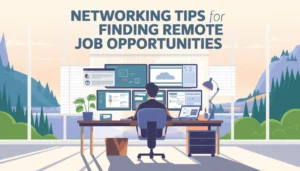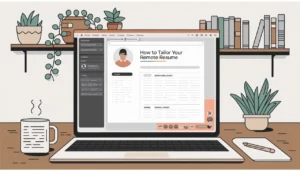Freelancing platforms have changed the pattern of looking for work. With their impressive spread of opportunities in various fields, such platforms reach freelancers and their clients based on particular skills in graphic design, writing, and even programming. However, it is pretty challenging to navigate through these digital marketplaces, especially for beginners. This is a fact that one needs to understand what most freelancers commit, with a view to success against the competition.
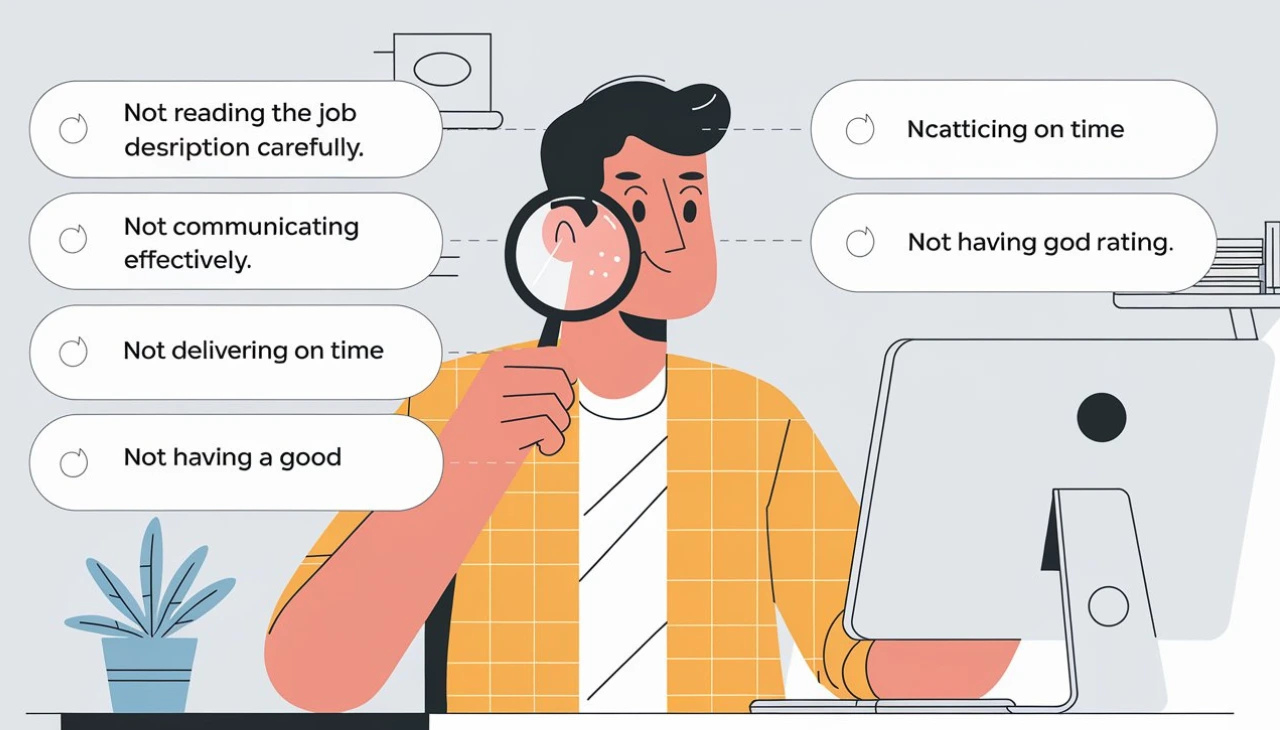
Many are found to make uncompleted profiles, low communication, and underpricing services, which will surely not help them achieve projects. Avoiding those weaknesses, being aware of them, and taking precautions will truly amplify their visibility, deliver better client relationships, and ultimately take their income to a higher level. Here’s a list of errors to avoid, which this article will provide, helping you not to falter in freelancing platforms. Knowing these things is key to creating a successful freelance career, whether you are new to freelancing or looking to refine your approach.
1.Incomplete Profiles
Why You Need a Well-Round Profile
Well, your profile is your very first impression that you make when joining freelancing platforms. It would be quite like having a virtual resume showing off what you do and what kind of expertise you have. Other than just attracting an ideal client, a well-written profile goes a long way in fostering trust and credibility. Especially in a competitive marketplace, the chances of getting projects will shrink down substantially if your profile is incomplete because most clients only hire those professional freelance workers who can present themselves both professionally and comprehensively.
Elements to Include
Bio: Describe your background, expertise and what makes you stand out from other freelancers. Be friendly and professional, yet don’t forget to remind everyone why you love your work, and the experiences that matter.
Skills: Clearly write out your skills according to the services you are offering. Use specific keywords by which clients might be searching and ensure you categorize them correctly. This will help a client immediately find your strengths.
Portfolio: Display the best work you have in front of a potential client via your portfolio. Include samples that would reenforce your skills and versatility for the kind of projects that you wish you’d get more of. A good portfolio makes it easier for the potential client to visualize the level of quality that they would get from you; it’s not all about putting on your best show of capabilities.
Complete and organize your profile as fully as possible to create the best impression of being a serious candidate in freelance work.
2. Poor Communication
Unclear Communication Impact
Communication is the back bon of successful freelancing. If the communication is not clear and consistent, then there is every possibility of missing out on misunderstandings, missing work due dates, and ultimately, unsatisfied clients. Such poor communication may take the specifications of the project to be wrong, and hence there are deliverables that do not arrive at the expectations of the client. Further impacts your professional reputation and this may lead to lousy reviews that make it hard for you to get further clients in the line. Clear and proactive communication builds trust, offers a collaborative relationship and has both parties on the same page about goals and expectations.
Tips for Effective Communication with Clients
Establish clear expectations: The early stages of any project clearly outline what can be delivered, timelines, and milestones. This kind of foundation helps in managing expectations of the clients.
Be Responsive: The more quickly you respond to client inquiries, the more their time is respected and that you are serious about your participation in the project. Aim for a response within 24 hours, at least an acknowledgment of receipt of their message.
Use Simple Language: Don’t use jargon or overly technical terms unless you’re certain that your client is familiar with it. When you will use clear and concise language, your messages will be well understood.
Seek Clarity: If you do not get something, go ahead and ask questions. This clarifies your understanding and also gives the impression that you are invested in the project to the client.
Regular Updates: Update your clients on what progress is made. This reassures them of things going well and allows you to collect feedback at some point.
The discussions should be followed by writing summaries to make sure both parties understand what they agree on. It will also work as a reference point later in the project.
Good communication will ensure freelancers build good working relationships with clients, avoid misinterpretation, and generally lead to successful projects and repetition.
3. Underpricing Services
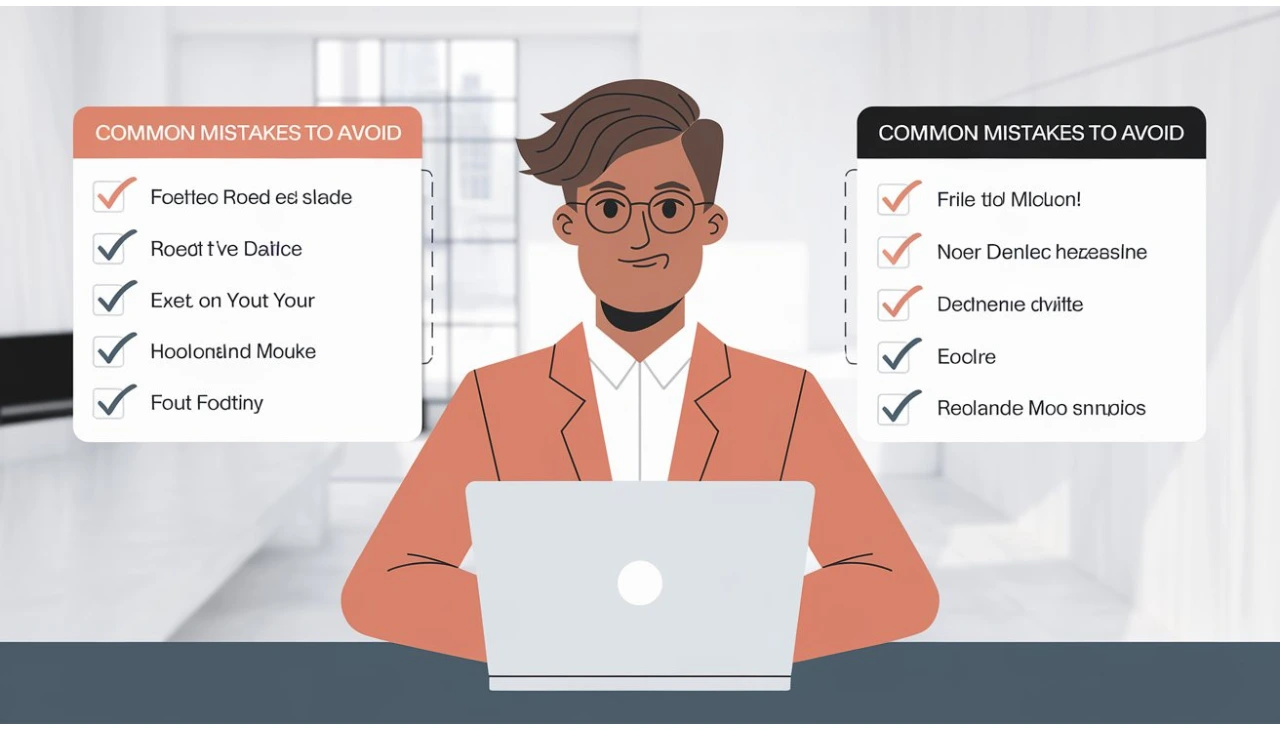
Dangers of Under-pricing Your Own Work
Most freelancers undervalue their services, possibly under an incorrect notion that to attract more clients they would have to undercut other freelance service. This concept is a long-term affair. In the short term, undervaluing your work destroys financial stability and thus runs a business into the ground. When you undervalue your work, you’ll also risk the perception that the services offered are of lower quality. This can attract clients who may not appreciate your expertise and perhaps may demand much more for little; hence, burnout and discontent.
Consistent low prices might also hold you back from raising your rates some time in the future as clients may highly react to rises in price. This will therefore lead you into a cycle of underpayment, where you are unable to invest enough in your skills, tools, or professional development, which ultimately stunts your growth as a freelancer.
How to Competitively Price Your Services
Know Market Rates. As your first step, see what other freelancers working in your niched market charge for the same or similar services. This should help you set a baseline for your overall fees and let you know where you might want to be with respect to market standard.
Understand Your Experience: Take into consideration the experience you bring with your niche, your special skill, and the quality of your work. Know when to charge more and the type of customer to charge more to.
Calculate Your Costs: Consider your living costs, software, and the tools you need for the work. Ensure your rates cover these and generate a sustainable profit margin.
Value Your Time: Consider how long each project will take and align with your rates. Just remember that your time is worth something, and it’s quite essential to be fairly compensated for the services rendered to you.
Provide packages or tiered pricing: Different tiers or packages exist to fit the different needs of the client. This way, you’ve got clients choosing an option based on what works best in their budget and still values your work.
Set competitive rates that reflect your skills and value offered, not just get increased income, but create respect for your work within the freelancing community.
4.Ignoring Client Feedback
Importance of Feedback in Freelancing
Feedback from the client is crucial to freelancing. They enlighten you on the impression that your work gives to other people and areas that need improvement. Undervaluing feedback may cause misunderstandings that lead to projects failing to fulfill the dreams of getting anything out of them; hence, their relationship with clients will be affected. When you look for and implement feedback, you are actually improving the quality of your work and providing evidence of your interest in pleasing your clients. This is generally a formula for long-term clients and can also support repeat business since clients are apt to go back to freelancers who listen and adapt to meet the client’s needs.
Effective Ways of Implementing Feedback to Your Work:
Seek Feedback Often: Do not wait for the completion of a project to seek feedback. While engaged with the project, constant feedback resolves issues related to the project and adjusts things wherever needed.
Be Open and Receptive: Accept the feedback. Whether it is a criticism or a negative comment, remember that growth or positive change does not happen only through praise but also through criticism. Listening can improve your relationship with clients.
Clarify and Confirm: Unless it is clear, do not ask for what has not been clarified. Once you think you understand – let him know that way so any seeming misunderstanding can be clarified. This approach doesn’t only indicate you are about getting it right but also helping the other person not misunderstand you in the future.
Implement Change Mindfully: Once you get suggestions, take some time and reflect whether these suggestions cohere with the intentions or with your visions of the project. Change it in such a way so that it starts to work better but also retains your individual style and expertise.
Follow up after revisions: You have done the changes according to what they asked for, so follow up on them and make sure they are okay with the revisions. This shows that not only do you respect their input, but you also commit to a good result for them.
By valuing and acting on client feedback, freelancers can improve their quality of work, strengthen their relationships with clients, and finally improve their reputation within the freelance marketplace.
5.Overcommitting
They pose many threats to freelancers who accept several projects at one go. The drive to boost income and gain accolades from clients may be justifiable, but acceptance of too many can cost dearly in more ways than one. Over-exposure will likely result in missed deadlines, low-quality results, and increased stress. Too many tasks to juggle will make it impossible to maintain focus, which generally diminishes the quality of work performed. This not only jeopardizes your present projects but also harms your reputation in the long run with clients becoming dissatisfied with your performance.
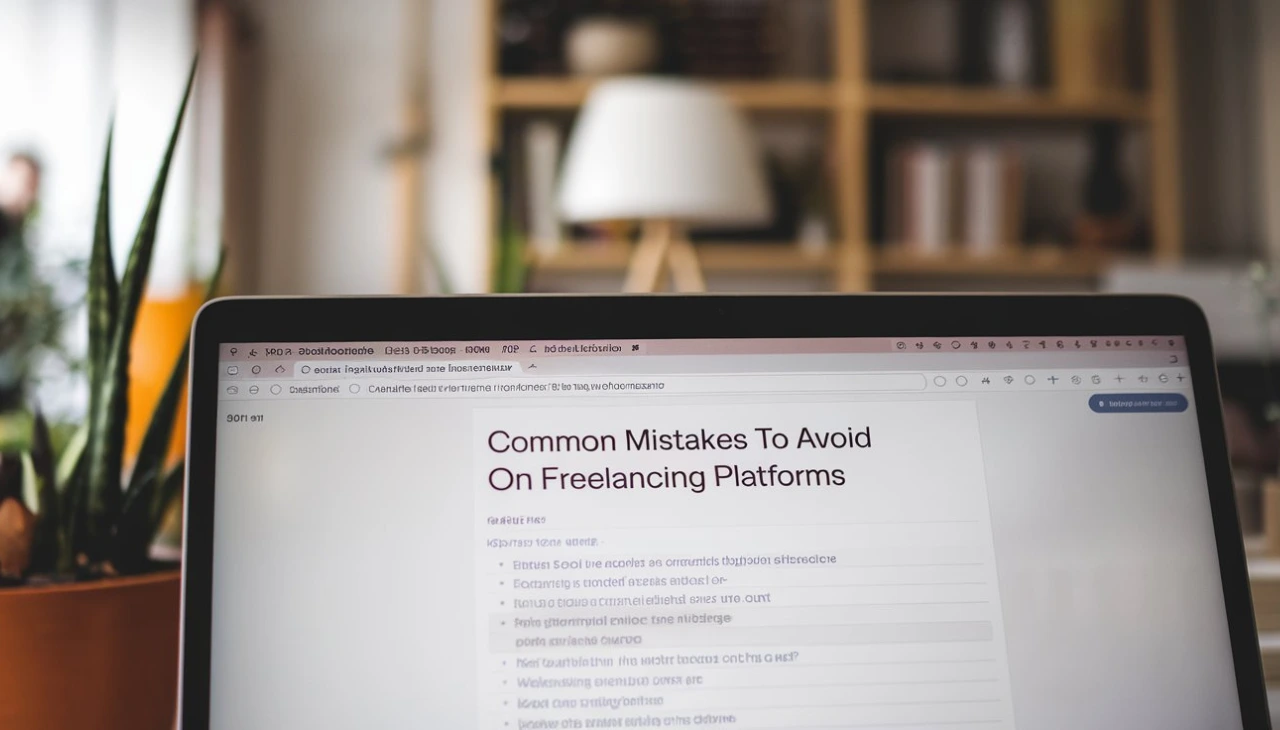
Along with chronic overcommitment, one will likely experience burnout as well, leaving that person utterly exhausted and not nearly as productive. This vicious cycle of stress may do just what you fear-most damage: destroy your passion for your work. It will be increasingly difficult to sustain a successful freelance career when you no longer feel like doing what you love.
Managing Workload and Deadlines
Know Your Capacity: Before you launch into new projects, consider your workload and how much you can take on realistically. Be realistic with yourself about time and energy.
Task Prioritization: Use a priority matrix to prioritize the projects according to urgency versus importance. You should begin by tackling those activities first where you would meet critical deadlines without overloading yourself.
Underpromise and Overdeliver: While discussing timelines with your client, do not forget to take into consideration possible delays as well as your own availability. Under promise and overdeliver is more fulfilling than over-promising and under-delivering.
Make Use of Project Management Tools: Tools like Trello, Asana, or Google Calendar can help you manage tasks and track deadlines. Such tools help in visualizing the workload and keeping up a schedule .
Learn to say no. Never be afraid to say no to projects that overwhelm your capacity or do not mesh with your goals. If you want to have good work-life balance, you have to learn how to set boundaries.
One way you can do that is to manage your workload in an efficient way, avoiding overcommitting, so you can be more productive, have high-quality work, and achieve better client relationships.
6.Neglecting Networking
Benefits of Connections Built on Platforms
Generally, networking is a very important part of freelancing that is very much overlooked. Building connections on your chosen freelancing platforms opens a lot of doors to new opportunities, collaborations, and even referrals. The more you establish relationships with other freelancers, clients, and industry professionals, the greater is that support system where you can be guided in various matters and insights. Strong networks also tend to increase visibility; in most cases, clients like to hire freelancers who come through references from people they can trust. Networking can also enable you to be informed about changes and trends within your industries for you to be able to stay on top of changes in your market.
How to Network Successfully
Take part in the community that the platform possesses: Most freelancing platforms have forums or community boards. Take part by asking questions, sharing insightful views, and giving your opinion on matters. This brings you some visibility and positions you as an informed member of that community.
Attend Virtual Events and Webinars: Most platforms host webinars, workshops, or networking events. Use this chance to meet other freelancers and potential clients. Discussions will further improve your ability to create meaningful connections.
Use Social Media: Join LinkedIn, tweet with fellow freelancers and industry leaders. Share your work, comment on posts, and engage in order to extend your reach.
Collaborate on Projects: Look out for chances to collaborate on a project with other freelancers. Joint projects sharpen your skills, present you with new clients, and enhance your professional network.
Follow Up and Stay in Touch: Follow up with someone after meeting by sending them a quick message indicating that you are interested in staying connected with them. Check in with people, and maintain the relationship-peoples’ memories are more likely to retain you in mind for future opportunities.
This way, by placing networking on top of your to-do list, you may develop real networking contacts, fostering a chance in working together and reciprocating the benefit of freelancing for better success in life.
7. Failing to Market Yourself
The Role of Self-Promotion
Self-promotion is, therefore, inevitable in this highly competitive freelancing landscape. Several people who expect good quality work, as a guarantee to many, believe that marketing oneself is not paramount. The fact is that there is no possible way to gain visibility even for the best freelancers in their line of work in an already overcrowded marketplace without the right self-promotion. Self-promotion will attract attention to your skills, particularly on what makes you different and unique: your value proposition and personal brand. The more you market yourself, the more people you’ll reach the more probability there’ll be on your side to get projects and therefore the higher your pay.
Effective Strategies to Display Your Work
Professional Portfolio: A portfolio is one of the most useful tools to display your capabilities. Let it represent a variety of the best work in different styles and skills. Make sure that it is well structured and very appealing to the eye to leave good impressions about you among the potential clients.
Utilize Social Media: LinkedIn, Instagram, and even Twitter are good channels for self-promotion. Post your work regularly, communicate with your viewers, and share with the professionals in the industry. Relevant hashtags can dramatically up your scope and garner possible clients.
Blog posts or articles that share your expertise will make you appear to be knowledgeable; now you can write about trends in your industry, tips that you have learned, and even the experiences that you’ve gone through in a project. This not only shows quality knowledge but also increases your online presence.
Leverage Testimonials: Publicizing testimonials from previous clients brings far faster credibility. Ask your past clients for testimonials and bring them front and center on your profile or website, so people know you can get referrals from there too.
Actively Network: You can join communities of freelancers, show up to industry events, and that’s just a tremendous way to get referral and collaboration opportunities that further amplify your self-promotion efforts.
Be it self-promotion or very effective strategies, raise your visibility, attract better clients, and open up the roads to a booming freelance career.
Conclusion
- In the competitive landscape of freelancing, it’s a little easy to avoid mistakes. Here, the article identifies common mistakes, such as incomplete profiles, poor communication, low pricing, failure to extend effort to follow up on feedbacks from clients, overcommitting, or perhaps not putting in enough effort to network, and not marketing oneself to his advantage. All these are major components that influence your freelance career and can consequently affect the ability to attract clients and maintain long-term relations.
- These will set a person up for more opportunities: taking in the importance of having an entire profile, embracing constructive feedback, managing workload, and effectively marketing one’s skills. Networking and relationships with other freelancers lead to collaborations and referrals that lend credibility and visibility to the freelancer.
- So, then, as you continue on your journey through freelance work, make some time to learn from these tips. Remember that this time will help not only raise the quality of your work and interactions with clients, but also sustain and bring your freelance career into reward. Every little bit of improvement matters in bringing you closer to success. Welcome these strategies, be disciplined, and watch your freelance business grow!
Frequently Asked Questions About Building a Portfolio
General Questions
1. What are freelancing platforms?
Freelancing platforms are online hubs where freelancers get in touch with clients who have a need for certain services. They provide a platform where an individual with a specific set of skills can present himself as capable, bid for the job, and communicate the client or their appointed representative as well as manage payment.
2. How do I increase the visibility of my profile on a freelancing platform?
Make sure it is complete with a professional photo, a compelling bio, listing of the related skills, and a well-organized portfolio showing your best work to make it an impressive profile. Emphasize your unique strengths and experiences that truly make you different.
3. What do I do if a client gives me really low feedback?
Take the feedback as a learning experience: acknowledge their concerns, clarify if needed, and discuss how you may improve it over points of improvement. Implement feedback in your future work and show commitment toward meeting their expectations.
4. How do I set my rates as a freelancer?
Market your services well by researching other freelancers’ profiles that are similar to yours, base your prices on the level of experience you have and the quality of work you do, and then you think of how much it costs you to live before you take up those prices. You don’t want to undervalue your skills; you must set prices that reflect services you will offer in a proper way.
5. Why is networking crucial to freelancers?
Networking will help you to form relationships that can eventually lead to recommendations, associations, and other opportunities. Among peers and industry professionals, you can gain insight and support for your career.
6. How do I best market myself?
Sell yourself by creating a professional portfolio, setting up some kind of presence on social media, perhaps posting examples of the work you’ve done, offering to write articles or blog posts on matters of concern to the industry, and keeping up and nurturing contacts throughout the freelancing networks. Self-promotion is all about repetition and frequencies; once you’re seen enough, people will remember you and hire you.
7. How to juggle different projects
Consider capacity assessment before taking up new work; order tasks, have appropriate deadlines, and work using project management tools to prioritize your workload. Learn when it is okay to say no in case you cannot do good quality work and thereby prevent burnout.






